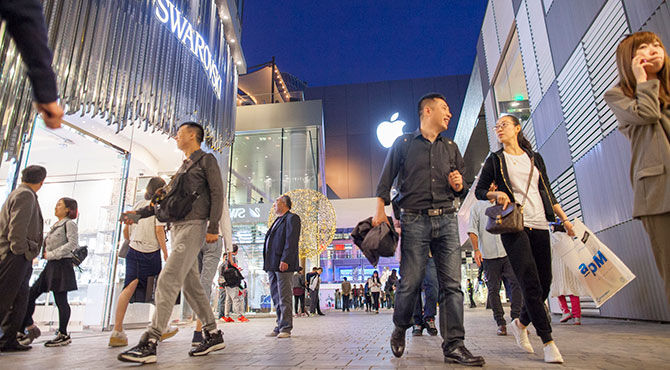Consumer spending keeps China economy on track
China has seen strong economic growth in the second quarter of the year, output has risen to 6.9 per cent after fears that tighter lending controls would depress investment in the country.

Output continues to rise in China despite fears
Despite fears that tighter lending controls intended to cool a surge in debt would depress investment, output rose 6.9 per cent, year-on-year, over the quarter – in line with Q1 growth and better than many economists had been expecting.“The economy appears to have ended Q2 on a strong note,” Julian Evans-Pritchard of Capital Economics wrote in a note. “This strength seems unlikely to last, however. The recent crackdown on financial risks has driven a slowdown in credit growth, which will weigh on the economy during the second half of this year.”Related stories
- Shanghai – major changes in work permit process
- China defends economic policy after Moody's downgrade
- Is China losing its appeal to global companies?
The Beijing government has set a growth target of 6.5 per cent “or higher if possible” this year and the latest data from the National Bureau of Statistics showed that consumer spending and trade growth had both picked up in the second quarter, offsetting lower investment in factories, real estate and other fixed assets.“Overall, the economy continued to show steady progress in the first half...but international instability and uncertainties are still relatively large, and the domestic long-term build-up of structural imbalances remain,” the statistics bureau said in a statement.Over the first six months of the year, retail sales rose 10.4 per cent, picking up slightly in the second quarter, while industrial output in June was 11 per cent higher than a year earlier.
Strong industrial production key for China
“The immediate driver is much stronger industrial production, which is being lifted by many factors: recovering exports, very low inventory, robust retail sales and investment-led demand,” said Gene Ma, chief China economist at the Institute of International Finance in Washington DC.“It shows that Beijing’s financial deleveraging was well-timed and carefully targeted not to have much spill-over on the real economy,” added Rob Subbaraman, chief economist for Asia at Nomura Holdings in Singapore. “Fiscal stimulus remains an important driver of growth. It’s also encouraging to see more signs of rebalancing with the pickup in retail sales growth.”Christopher Balding, associate professor at the HSBC School of Business at Peking University in Shenzhen, commented, “What is important to note is that this is heavily driven by credit and fixed-asset investment. Despite the talk, there is no change to the Chinese growth model.”“Growth overall was very robust,” said Iris Pang, an economist at ING Bank NV in Hong Kong. “It is more of a consumption story than an investment story.”For related news and features, visit our Enterprise section.Access hundreds of global services and suppliers in our Online Directory

Get access to our free Global Mobility Toolkit

©2025 Re:locate magazine, published by Profile Locations, Spray Hill, Hastings Road, Lamberhurst, Kent TN3 8JB. All rights reserved. This publication (or any part thereof) may not be reproduced in any form without the prior written permission of Profile Locations. Profile Locations accepts no liability for the accuracy of the contents or any opinions expressed herein.









































